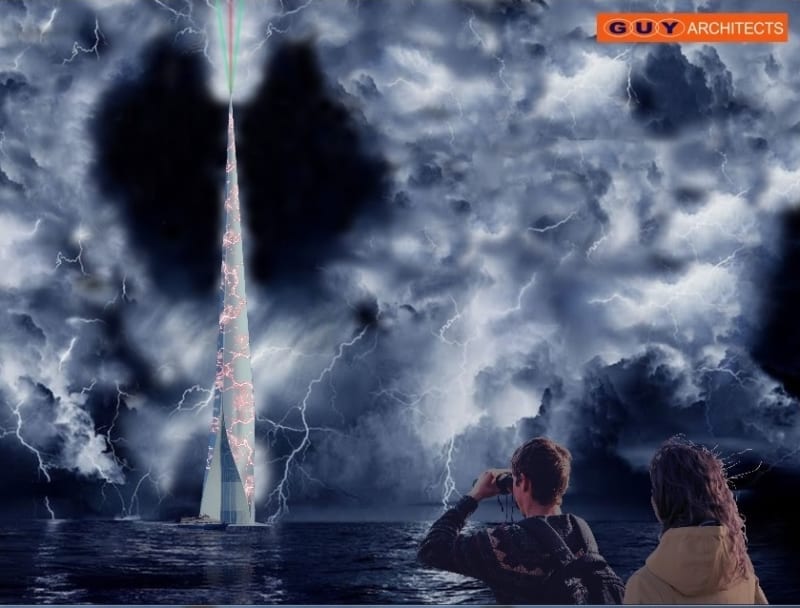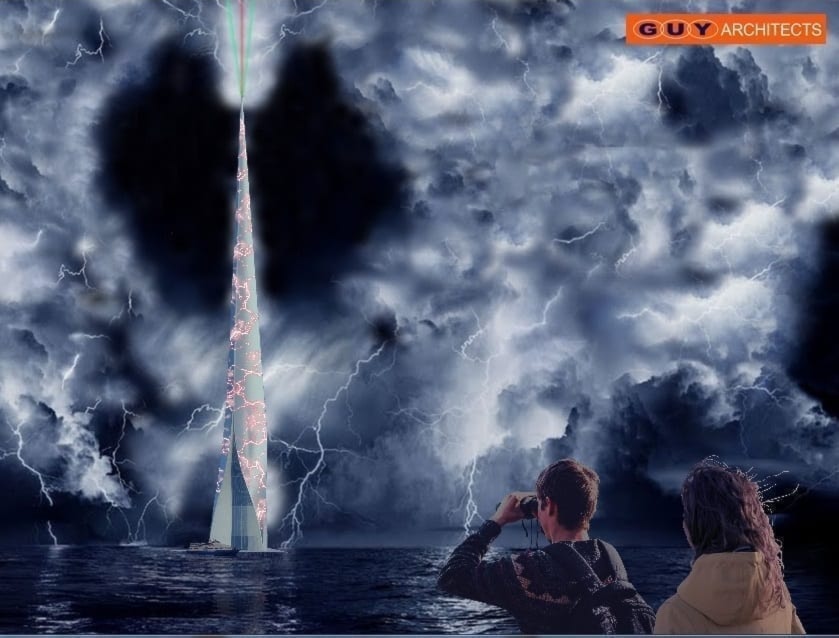A team of Yellowknife architects has entered their striking spire into an international design competition.
The eVolo 2019 Skyscraper Competition gives out prestigious awards to entries that “redefine skyscraper design through the implementation of novel technologies,” according to its website. The first place prize is $5,000 and the winner will also have their design distributed via v2com, an international newswire specializing in architecture and design.
“It’s a global competition for new uses for high-rise structures to address the ecological instability of the planet,” said Wayne Guy, founder and principal of Guy Architects.
Guy, and his team made up of Constantina Tsetsos, Jamie McFadyen, Tyler Laing-Chan, Peter Gillis, Richard Guy and Arash K. Pakzad spent about three months working on their entry ahead of the submission deadline of Feb. 12.

The final project is a Lightning Attracting and Storage Terminal (LAST), a one-kilometre high tower in the middle of Venezuela’s Lake Maracaibo. The lake is the largest in South America and the number one lightning hotspot in the world, with an average of 232.52 flashes of lightning per square kilometre each year.
The idea is that the tower will harvest the lightning that strikes over 200 days out of the year and store it in a capacitor which feeds down to an eco-battery.
“Each lightning bolt is the equivalent of about three hundred pounds of coal,” said Guy.
“With dozens of strikes a night, for the 200 nights, it ends up being really quite a meaningful source of renewable power collection.”
The building is a net-zero facility, meaning it runs on its own power without producing greenhouse gases. The tower would also function as an observatory and exhibition centre which visitors could travel to by ferry to watch nature’s nightly light show.
Venezuela is in the midst of turbulent political times, which is in part due to the fluctuations of the petroleum-based economy as countries around the world are vying for the limited resource, said Guy.
“Because Venezuela has been in the news for the political unrest that’s happening currently, we saw this not only as an energy project but something that could be used as a paradigm for other similarly affected areas in the developing and developed world to stabilize economies based on renewable energies,” he said.
Venezuela is one of the world’s top oil producers and the country’s first commercial oil well was drilled on the eastern shores of Lake Maracaibo in 1914. But petroleum is getting rarer by the day and methods of extracting it such as fracking are destructive and pollute the Earth. So the team decided to build their design on renewable energy options rather than resource extracting methods.
“We felt we don’t have much time to really make that shift,” said Guy. “I think it was said that if we don’t turn this planet around by 2030 we’re in really serious trouble.”
Guy said his firm has entered competitions like this in the past, as a way of flexing their creative muscles.
“These competitions for us are like exercises,” he said. “Because they’re based on the newest and best ideas they force us to think outside the box and stretch our imaginations. We always find that what we get out of it always benefits the projects that we do day to day.”
It also challenges the notion to look to the south for innovative design ideas, he said.
“We find that the solutions that we generate up here are ones that are applicable right across the globe,” said Guy.
Competition winners will be announced on April 9.
